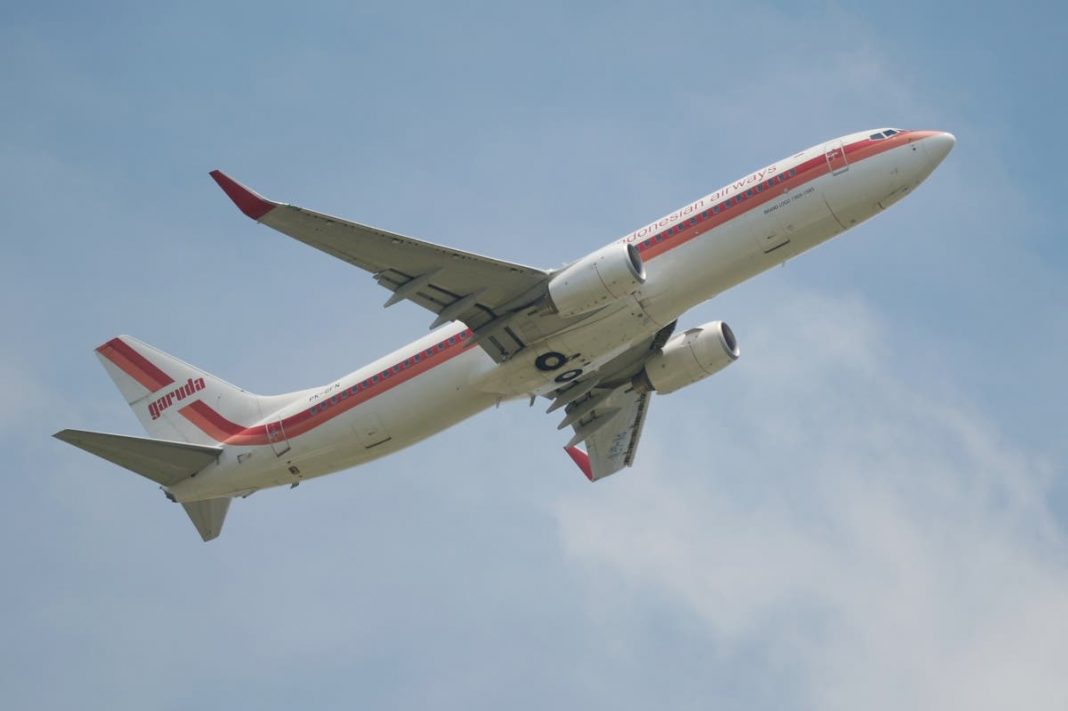A Garuda Indonesia A330-300 landing at Makassar found itself stuck in the mud on Wednesday evening. Substantial rains have fallen on the city in South Sulawesi since the weekend. On Wednesday, there was more rain and storms around Makassar. The A330 was turning on the runway, preparing for departure when its nose gear ended up in the mud.

A330-300 becomes mired in the mud
The aircraft, PK-GHD, had operated a flight into Makassar from Jakarta. According to several reports, including Sam Chui, the A330 was backtracking along the runway for departure. As it turned to line up for takeoff, the nose gear left the runway, hit the grass, and became mired in mud.
The A330 was flying back to Jakarta and operating GA613. The flight was to depart at 20:10 local time on Wednesday evening and land into Jakarta one hour later.
Pictures available on Twitter show the plane had gone way off the runway, and the front nose gear became buried up to around one foot. According to Indoflyer, the A330 was turning right to line up for takeoff on runway 21.
Garuda Indonesia GA610 CGK-UPG tergelincir di Bandar Udara Sultan Hasanudin, Maros.
Pesawat yang terlibat adalah Airbus A330-343X PK-GHD.Credit: Unknown pic.twitter.com/njGsOPh578
— Indoflyer.net (@indoflyer) July 1, 2020
Aerotime reports there were just 26 passengers on the plane, making it one lightly loaded Airbus. There are no reports of injuries. Makassar’s Sultan Hasanuddin International Airport kept handling some flights after the incident. This flight was canceled, and the aircraft currently remains in Makassar.
Most Garuda A330s parked, some still flying
Indonesia’s national carrier has 27 A330 aircraft in its fleet. They are a mix of A330-300 and A330-200 planes. Presently, 19 of the 27 A330s are parked. The aircraft involved in Wednesday evening’s incident is leased, and Garuda Indonesia has operated it since August 2016. The particular plane is well known in South East Asia as its sports Garuda’s retro livery.
PK-GHD has kept flying in recent months but on reduced schedules. Before yesterday’s flights, the aircraft flew up to Seoul from Jakarta on Saturday, June 27, returning to Jakarta on Monday, June 30. Then it sat idle for 48 hours.
Garuda Indonesia struggles with travel downturn
Like airlines everywhere, Garuda Indonesia has scaled back operations in response to the travel downturn. By early June, capacity across the wider Garuda network was down by 70%. Some 100 of the airline’s 42 aircraft are now parked. Pilots lost their jobs, and thousands of staff are furloughed.
In the first quarter of 2020, Garuda Indonesia reported a 31.9% decrease in revenue from passenger and cargo operations. The Indonesian Government is providing Garuda with US$598 million in working capital to help keep it flying.

Low loads and declining revenues have led to suggestions Garuda Indonesia may increase its fares, a significant issue in a country where the average monthly income is $280. The airline has kept flying during the travel downturn. Indonesia comprises over 17,000 islands. Around 6,000 of the island have towns and cities on them. Keeping the islands connected is critical and a responsibility Garuda Indonesia takes seriously.
“We will still fly to places to ensure connectivity across Indonesia,” Garuda Indonesia’s President Irfan Setiaputra, told The Jakarta Post.
But that connectivity comes at a cost. Combined with social distancing protocols, Garuda Indonesia has taken a battering this year. Yesterday’s incident in Makassar will not help.
[ad_2]
Source link



